
“The legend says that a crystal skull was stolen from Akator in the 15th or 16th century, and that whoever returns the skull to the city temple will be given control over its power.” —Indiana Jones
“I knew About the crystal skulls as more than one, the Mitchell-Hedges Skull, being the most famous. It’s impossible to date them and the way they were made sort of defies the physical science because it’s crystal, which is kind of carved against the grain, which in most instances would shatter and splinter the crystal, so inherently, the way these were manufactured is very mysterious maybe even a little bit towards the paranormal and there’s a lot of legend about the skull and that seemed to be perfect for Indiana Jones to go after to try and solve the mystery.” —Steven Spielberg
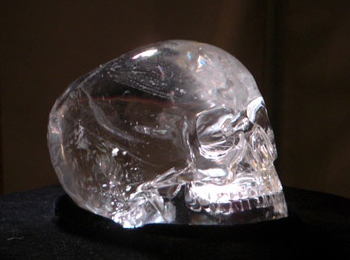
“There are a number of crystal skulls in existence. The greatest mystery is how they were made. Using today’s methods, to attempt to do such a thing, to carve a crystal skull out of a single piece, have proved to this point fruitless. Nobody’s been able to do anything like that. So there’s a great speculation about how this was done, what technologies were involved, who the makers of the crystal skull are.” —Harrison Ford
Eighteen years after Indiana Jones and the Last Crusade’s release, production began on Indiana Jones and the Kingdom of the Crystal Skull. The movie was filmed under the working title “GENRE” to keep the details of its production secret.
The early concept artwork of the Skull was done by Miles Teves and later modified by Erik Tiemens (who was simultaneously working as the concept design supervisor on Star Wars: Episode III Revenge of the Sith) at Industrial Light and Magic. This concept art was given to Stan Winston Studios where the piece would later be further refined.
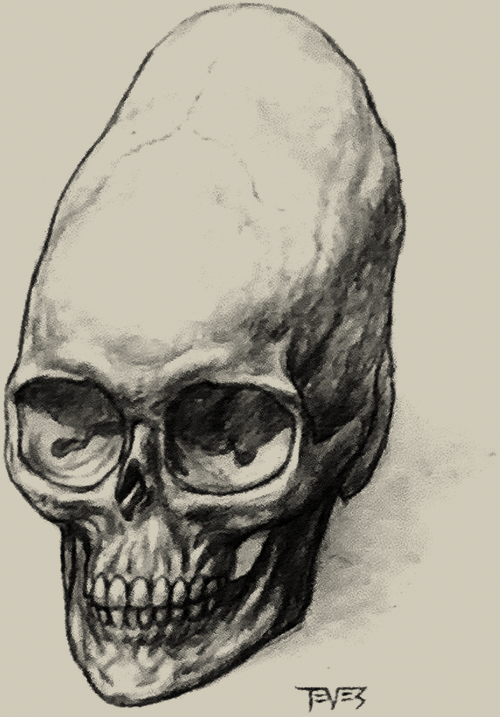
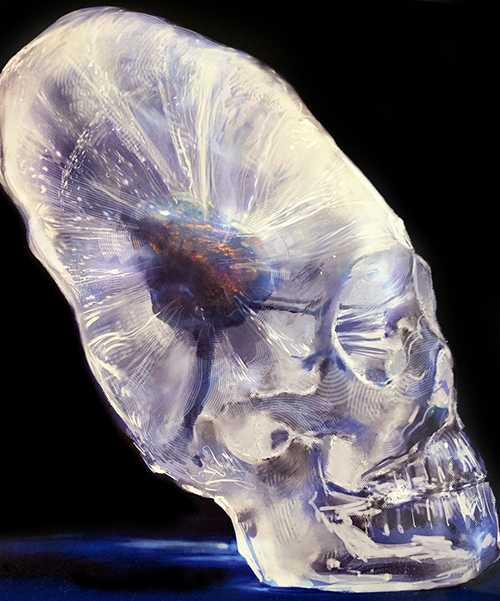
The team at Stan Winston Studios, led by effects team supervisor John Rosengrant, took the early design from ILM and proceeded to move forward with the project. They had to come up with a design quickly as they were given the project right before production was slated to start shooting. Rosengrant was tasked to make the Skull look to be something not of this Earth. Steven Spielberg wanted the face to look neither human nor alien. It was first sculpted it in the computer by Rosengrant and Scott Patton. They showed the numerous designs to Spielberg through the computer using the ZBrush 3 sculpting software. Once Steven picked the direction he wanted to go with, he had the team remove the nose and changed the look of the eyes on the spot with their editing software. This finalized the preproduction design and allowed the team to make a rapid prototype of the Skull so they could figure out how to build it.
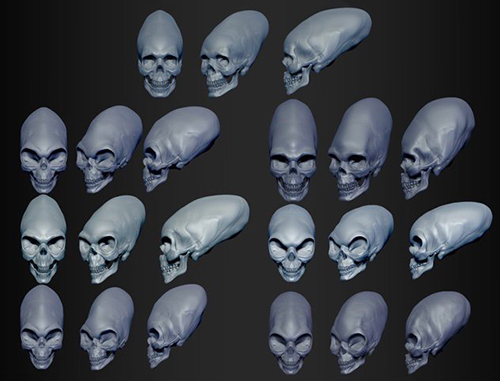

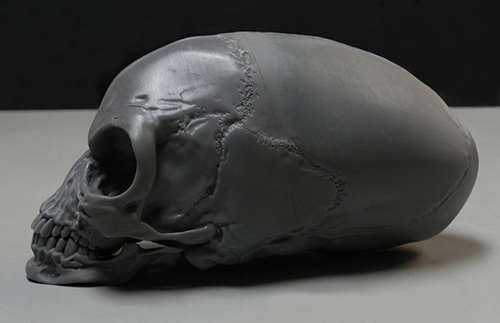
There was a discussion early what to make the Skull from. Glass was ruled out as too fragile and it was eventually settled on to use a water clear urethane that was cast hollow but would appear to be more solid in the film. The main concern was ensuring no bubbles appeared when using the urethane. Once this obstacle was overcome, the inner workings of the Skull began. The first part was a little brain added inside the Skull surrounded by a filler layer. This created a faceted quality which gave the illusion the Skull was more dense, finalizing the Skull as a complete piece.
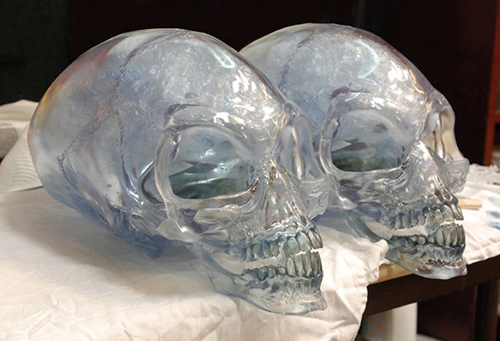
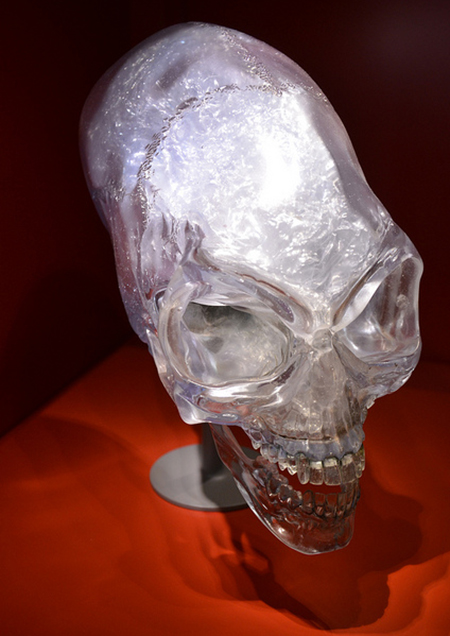
Next came the design phase of the creating the skeletons. The look was based on bird bones to make them more sculptural and different than human skeletons. Like the Skull, all of the skeletal bodies were made from urethane as well. Also, each figure in the thrown room had a slight variation from the other. This allowed for each one to be individual and was done through using a slight change in color and in their sculpt.
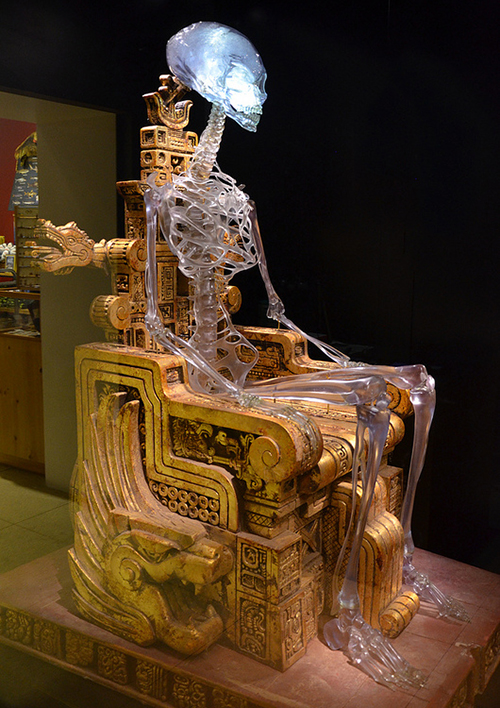
The difference most people don’t realize is that the aliens at the end of the movie are 9’ tall giants compared to the 4’ alien from the first part of the movie’s autopsy. During filming there were two different sized Skulls created. The Skull that was carried by the cast and filmed in most of the scenes is slightly smaller. A larger Hero prop was made for close ups and the final scenes where the Skull was attached to the skeleton.
